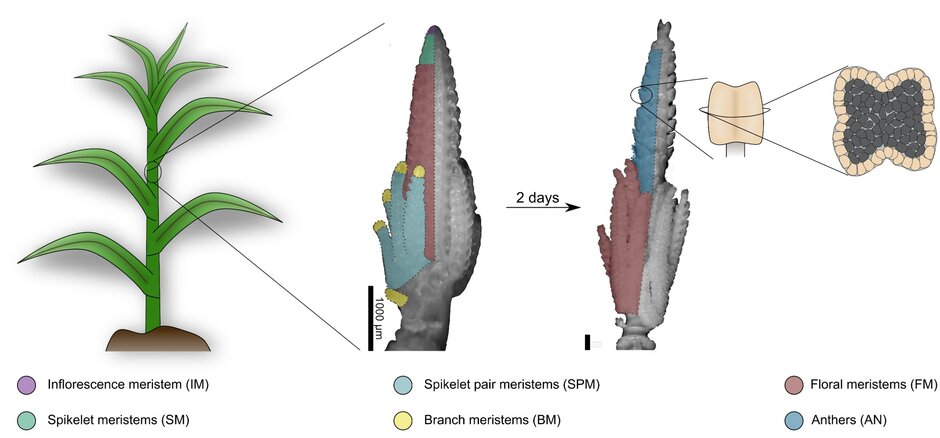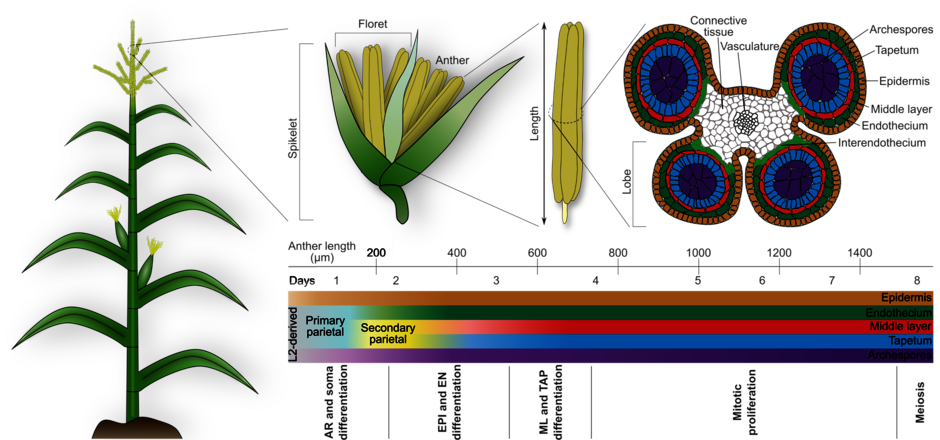In contrast to animals in which meiotically competent cells develop in embryos, plants switch from vegetative to reproductive growth only during flowering. In maize, the tassel contains the male flowers in which pollen encasing the sperm develop in anthers.
During their life cycle, land plants generate new organs from distinct meristems, containing a set of undifferentiated stem cells. Throughout vegetative growth, organs are generated primarily from the shoot apical meristem (SAM) and the root apical meristem (RAM).
Once the plant switches to reproductive growth, the SAM is converted into the inflorescence meristem (IM). Spikelets, florets, and anthers form through a series of intermediate types of axillary meristems.

In maize, tassel spikelets contain two florets, each of which has three anthers. The first cell type that develops from pluripotent anther primordia are germline cells (Archesporial cells, AR). Little is known about the molecular mechanisms that regulate the differentiation of stem cells into germ line cells. Research in Arabidopsis, rice, and maize indicates that the differentiation of stem cells into the male germ line requires highly spatiotemporal regulated processes. Therefore, our aim is to identify novel factors and unravel the interconnection of signaling networks, as well as to understand the differences between maize and Arabidopsis in male germline initiation.

